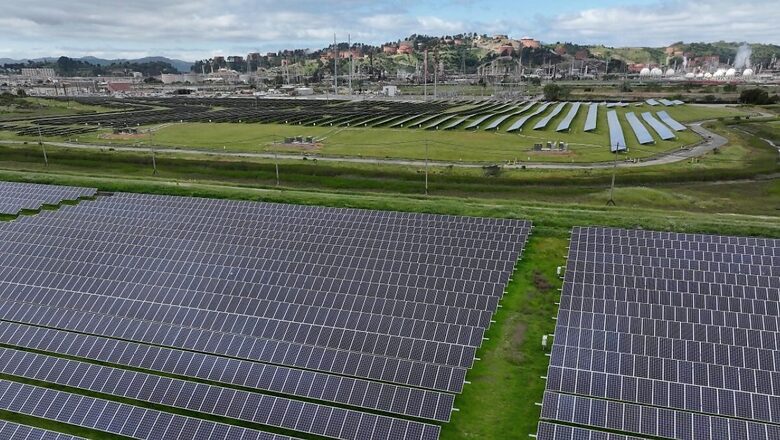
views
India is set to more than triple wind and solar capacity by 2030 compared to 2022, but would require further international support and climate finance to scale it five times to reach 600 GW in line to align with the 1.5℃ goal, according to a new report.
The new analysis done by Germany-based NewClimate Institute and Climate Analytics, estimated the level of solar and wind energy deployment that 11 big countries will require to keep global warming below the 1.5℃ goal as set under the Paris Agreement, and meet their growing electricity demand. The list covers countries that are responsible for over 70% of global wind and solar deployment and include the US, India and China.
India has already set a target of installing 319 GW of solar and 110 GW of wind capacity by 2031-32. However, according to the report, it will need an installed capacity of 610 GW (460 GW solar and 150 GW wind) by 2030 to align with the 1.5℃ goal. This is also in line with the global goal of tripling renewable energy capacities by 2030, as decided at COP28 in Dubai last year.
The findings also come at a time when countries are preparing to submit their next round of Nationally Determined Contributions (NDCs). The new set of climate goals to be submitted by early next year are required to be more ambitious, and stronger than the previous one, and have to be implemented by 2035.
NOT POSSIBLE WITHOUT INTERNATIONAL FINANCE SUPPORT
Wind and solar power are accelerating in India, but the electricity demand is growing even faster. As a result, renewables are still growing alongside coal, rather than displacing fossil fuels from the mix. India’s power sector remains heavily dependent on coal, but fossil fuels must exit the Indian power sector before 2045 to align with 1.5ºC, the report estimated.
According to the report, India will require large-scale investment through international support and climate finance to move away from coal and accelerate renewables deployment. “High-income countries will need to provide substantially increased climate finance to support emissions reduction abroad, in line with their ‘fair share’ of climate action. Achieving these benchmarks in lower-income countries is therefore a global responsibility, rather than a domestic responsibility,” the team noted.
The report called for scaled-up international support through low-cost capital to make investments viable, and climate finance to fund rapid energy transition. Advanced economies should also provide concessional finance, and grants-based financing to help in grid expansion and the early retirement of fossil assets, it emphasized further.
According to the most recent assessments, only 15% of global clean energy investments are made in Emerging Market and Developing Economies (EMDEs), excluding China. “Almost a year on from the conclusion of the first Global Stocktake at COP28, the need for action remains as urgent as ever. Despite growth in wind and solar power, today’s rates of deployment are not sufficient to limit warming to 1.5ºC,” the team stated.



















Comments
0 comment